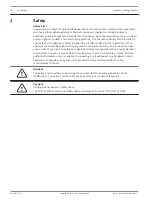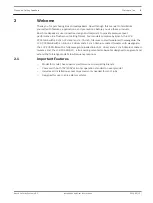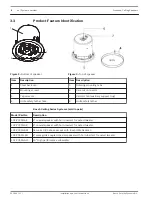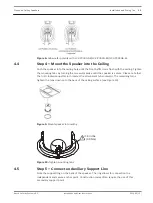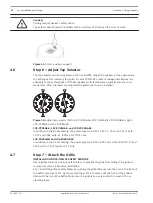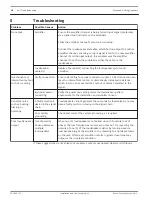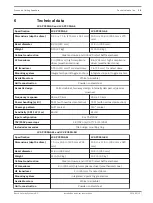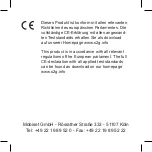
Troubleshooting
Problem
Possible Causes
Action
No output
Amplifier
Ensure the amplifier channel is being fed an input signal (preferably
via a signal input indicator on the amplifier).
Verify the amplifier channel’s volume is turned up.
Connect the loudspeaker and cable, which had no output to another
amplifier channel, ensuring an input signal is fed to the new amplifier
channel. If you then get output, the problem was the amplifier
channel. If not, then the problem is either the cable or the
loudspeaker.
Loudspeaker
cables(s)
Replace the cable(s) connecting the loudspeaker system and
amplifier.
Questionable or
intermittent output,
such as crackling
Faulty connection
Ensure all cabling for proper connector contact. A bad connection can
result in intermittent contact or dramatically increased resistance,
which in turn can cause reduces output or noises unrelated to the
signal.
Improper power
tap setting
Verify the power tap setting under the loudspeaker grille is
appropriate for the installation and amplifier chosen.
Constant noise
such as buzzing,
hissing, or
humming
A faulty electronic
device in the signal
chain
Loudspeakers cannot generate these sounds by themselves; you may
have a faulty electronic device in the signal chain.
Poor system
grounding
Check and correct the system grounding, as required.
Poor low-frequency
output
Out-of-polarity
hookup between
multiple
loudspeakers
When two (2) loudspeakers are hooked up out of polarity (out of
phase), the low frequencies cancel each other out. Try reversing the
polarity of one (1) of the loudspeakers either by turning around a
dual-banana plug at the amplifier or by reversing the tip/sleeve leads
on the jack. Which ever condition results in greater low-frequency
output is the in-polarity condition.
If these suggestions do not solve your problem, contact your nearest dealer or distributor.
5
14
en | Troubleshooting
Prosound Ceiling Speakers
2016.05 | 12 |
Installation and User Instructions
Bosch Security Systems B.V.




